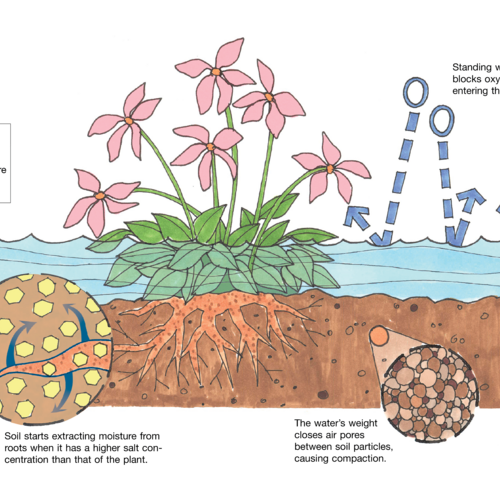IF you’ve experienced a flood, a wrong move after the water recedes can make a bad situation worse. To minimize flood damage in the garden, take these steps:
1. Identify the survivors
Most plants, with the exception of seedlings and new transplants, can take flooding for up to a week. When standing water lasts longer, however, problems can occur. Standing water keeps air from reaching a plant’s roots, and without oxygen, plants drown.
If foliage looks wilted days after the water recedes, the plant will likely die due to root damage. Wait to cut down a tree that looks dead, however. Its canopy may leaf out the following spring, a sign that the tree is recovering.
2. Manage high salt levels
Brackish water poses additional threats. After the floodwater recedes, the salt left behind can suck moisture out of the plant’s roots and keep them from taking up water. To lower your soil’s sodium level, give plants 1 to 2 inches of fresh water per week
for roughly two months and apply gypsum, which detaches salt from soil particles. Your local extension center can help you determine how much gypsum to use. Continue to water as often as you can (without causing another flood), and be aware that excess salt in the soil may harm future salt-sensitive plants.
Freshwater floods can also increase the amount of sodium in your soil, although to a lesser degree. After any flood situation, it’s best to lay off fertilizer for a month. This practice allows rain and irrigation to normalize salt levels and gives plants time to recover before directing energy toward developing new growth.
3. Fix soil compaction
Days of standing water will compact the soil. Aerating your turf and garden can help alleviate the situation. Also consider tilling 2 to 3 inches of compost into the soil to loosen the earth and prepare it for planting. Just be sure to let the soil dry out first; digging in too quickly after a flood will harm the soil’s structure.
Jeff Gillman, author of The Truth About Organic Gardening, is an associate professor of horticulture at the University of Minnesota in St. Paul.
